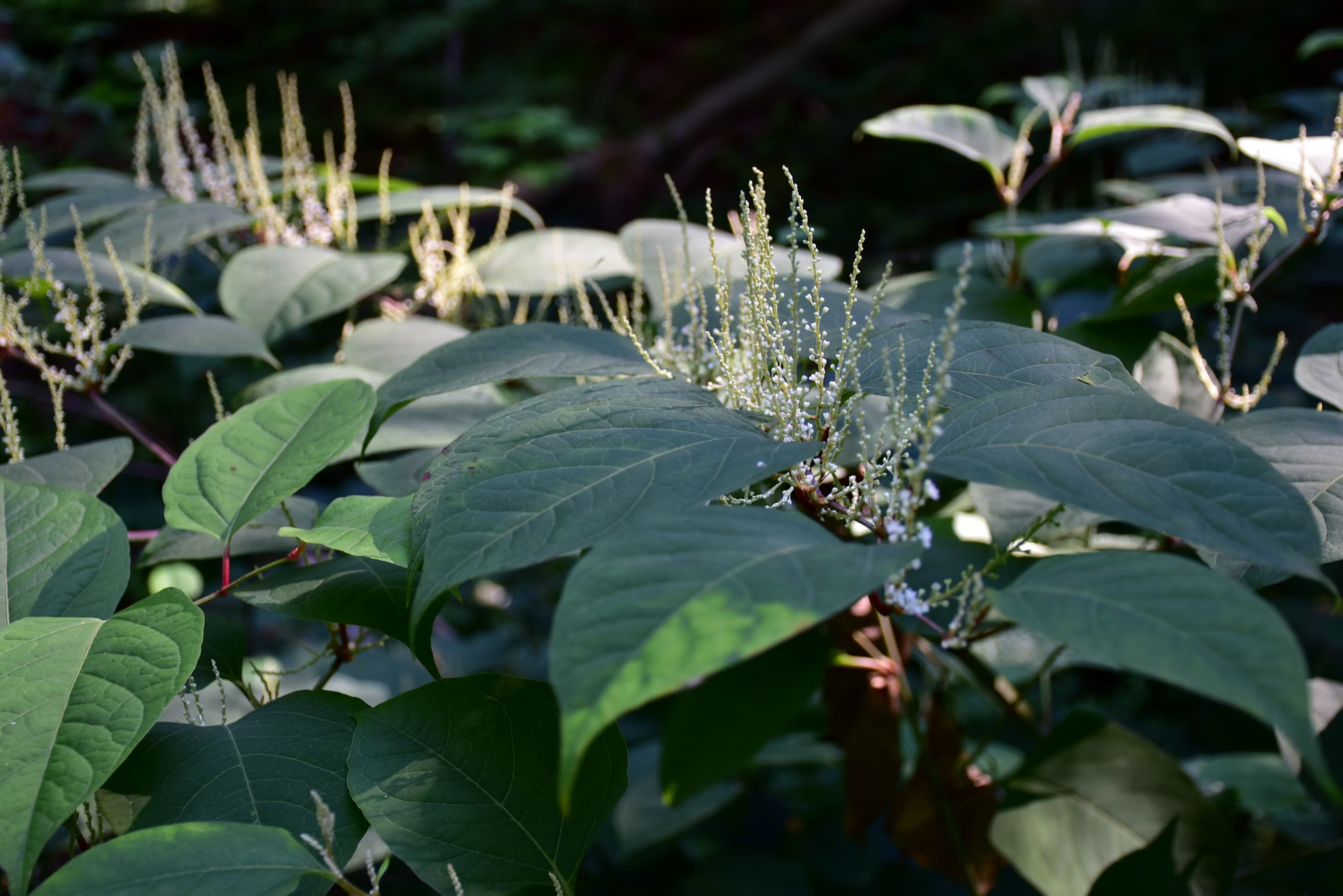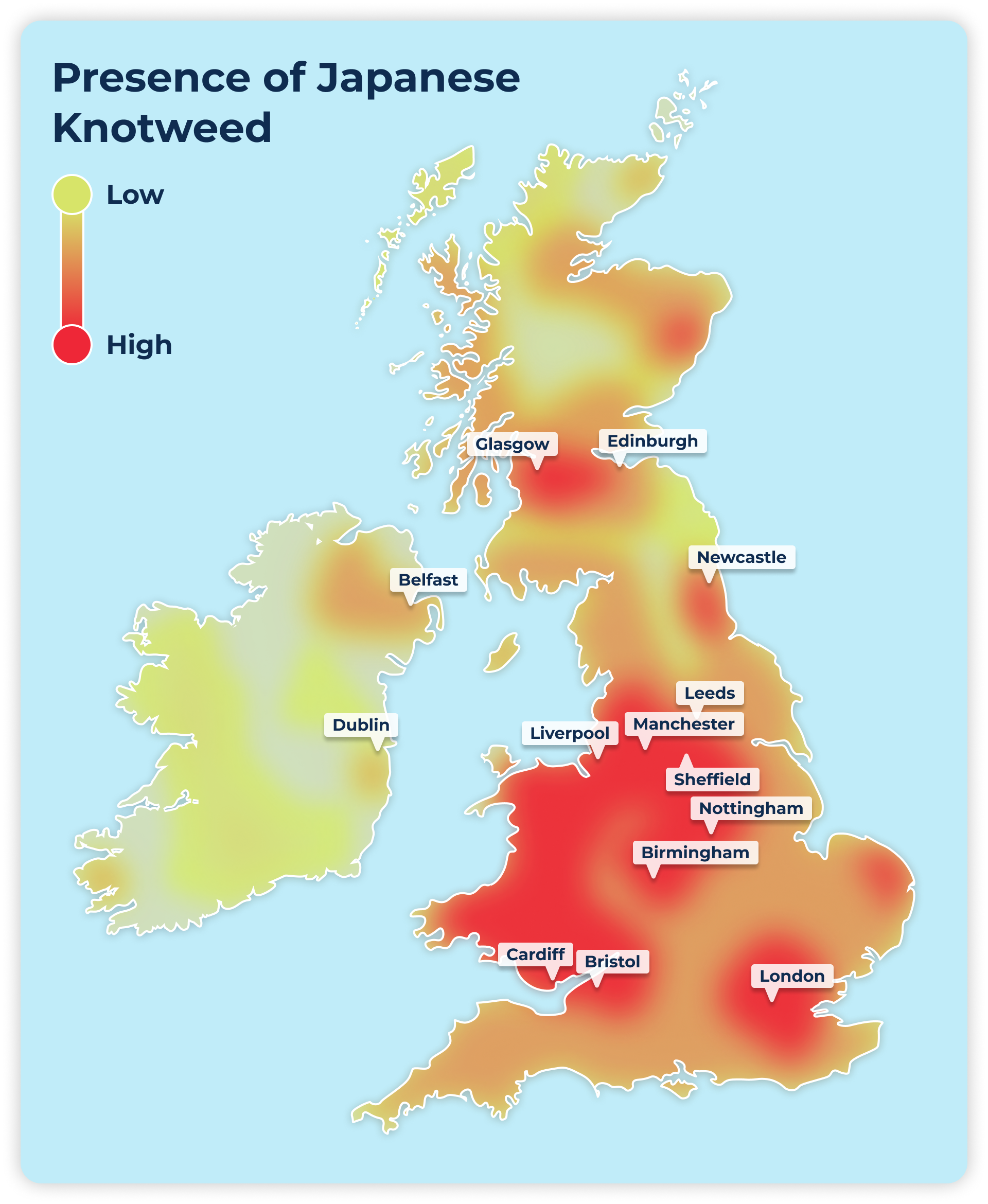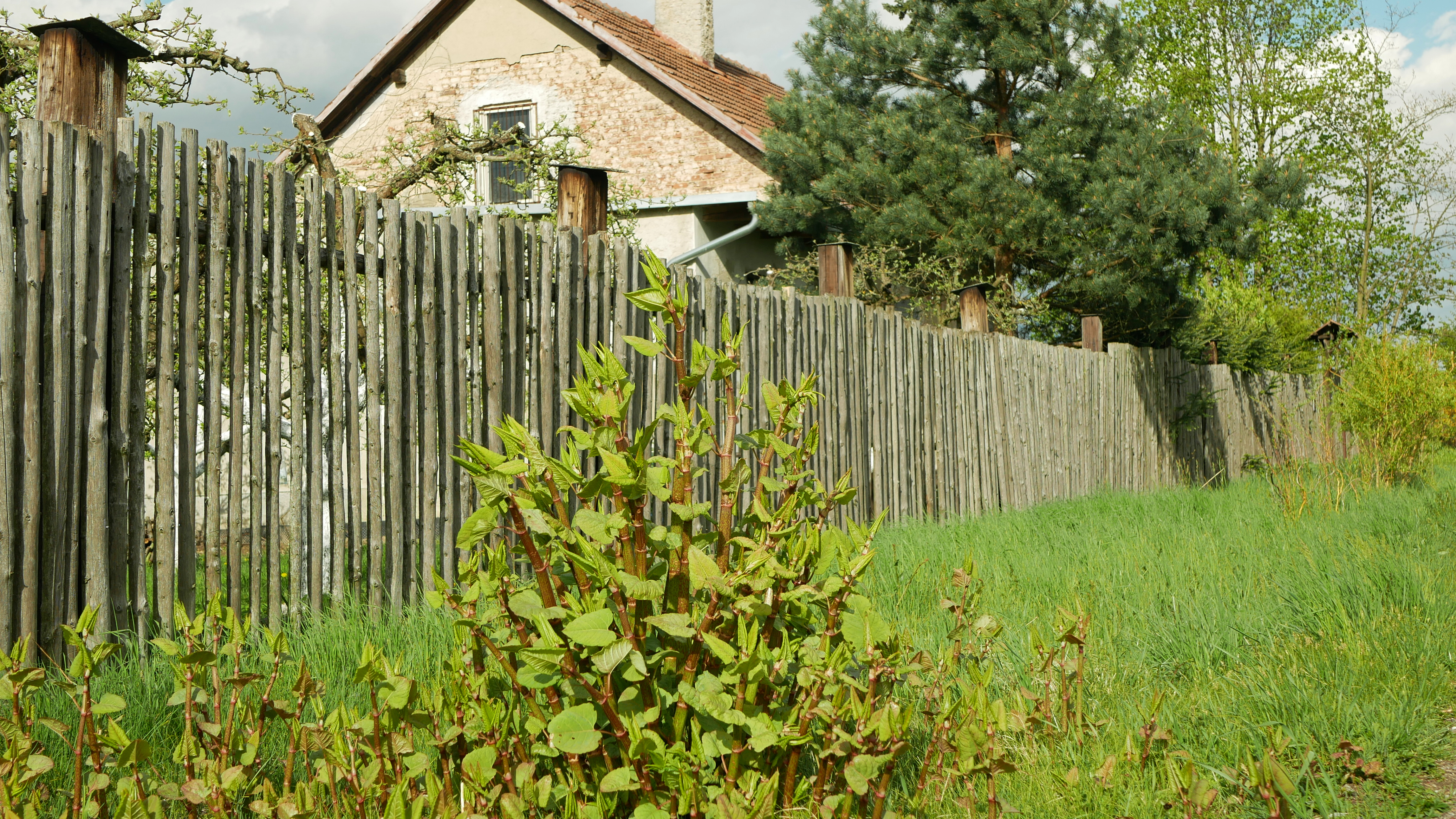
Updated: Oct 24th, 2025
Selling a House with Japanese Knotweed
Selling a house with Japanese knotweed is more difficult than selling one without, but it can still be done. Due to the nature of the issue, you’re unlikely to be able to sell your house fast, but if you’ve discovered Japanese knotweed in the house you want to sell, fear not – our experts have created this guide to help you navigate this complication in your sale with ease.
Auction House London are specialists in selling properties with challenges, so, if you are looking to sell your house with Japanese knotweed, consider selling your house easily with us.
What is Japanese Knotweed and What Does it Look Like?
Japanese knotweed is a hardy, clump-forming, herbaceous perennial with flecked reddish purple stems and leafy greenery. Prized for its exotic appearance, it was introduced to the UK from Japan as an ornamental garden plant in the early 1800s, by Victorian plant hunters. Since its introduction, it has spread far and wide across the whole of the UK, with very few areas remaining untouched by its presence. If you suspect it, don’t always fear the worst – there are many plants which are often mistaken for Japanese knotweed, which need to be ruled out first.
Japanese knotweed can grow anywhere, but is most often found by riversides, around roadsides and surrounding man-made structures like houses and other properties. If you’re wondering if your house has Japanese knotweed, keep an eye out for tell-tale signs including:
- Tall, bamboo-like stems with red/purple flecks.
- Heart-shaped leaves (larger than most other plants).
- Clusters of small white / cream coloured flowers during late summer to early autumn.
- Hollow stems that might be easy to break by hand, especially in the late summer or autumn when the plant matures.
- Dead or brittle stems which remain standing through winter months.
- Signs of rapid growth, like new shoots pushing up through the ground quickly in spring.
During the summer, this plant can grow up to 10cm per day, to a maximum height of around 2.1m. Even once fully cut back, Japanese knotweed can regrow from a mere fragment the size of a thumbnail of the mother plant, and lie dormant beneath the ground for years at a time, until spreading underground and sprouting up again.

Why is Japanese Knotweed Bad?
Although Japanese knotweed may look innocent enough to the untrained eye, its invasive nature and rapid speed of growth means it can cause severe damage to houses. It is powerful enough to break through concrete, house foundations, mortar and cavity walls, and can cause damage to infrastructure such as drains and sewers.
If left untreated, Japanese knotweed’s powerful root system can destabilise building foundations and even cause cracks in walls, leading to costly repairs. It can significantly reduce property value and make it difficult to sell or mortgage the property. You’ll find more information on selling a house with Japanese knotweed further on in this guide. In the UK, it is illegal to cause the species to grow in the wild as stipulated in the Wildlife and Countryside Act 1981.
Interestingly, Japanese knotweed is not a problem at all in Japanese infrastructure like it is in the UK. This is because its growth is kept in check by indigenous insects and plant diseases, which don’t exist in the UK.
Japanese Knotweed Heatmap
Selling your house with Japanese knotweed isn’t easy, and can negatively impact your house price by up to 10%, so it’s likely you’ll want to know whether this invasive plant is prevalent in your area. Invasive plant specialists, Environet, estimate that approximately 5% of homes across the UK are currently affected by Japanese knotweed.
Take a look at our Japanese knotweed heatmap to see if there is Japanese knotweed in your area.

Get an instant offer on your house
Selling a Property with Japanese Knotweed FAQs
If you’ve discovered Japanese knotweed in or around your home, whether you are selling or not, we’d recommend seeking professional assistance as soon as possible in order to prevent any further damage. If you’re selling your house and it’s been affected by Japanese knotweed, take a look through our FAQs below for our expert advice.
Can You Sell a House with Japanese Knotweed?
At one stage, banks and mortgage lenders simply would not entertain properties affected by Japanese knotweed. This is no longer the case, and you can sell a house with Japanese knotweed. Selling a house with Japanese knotweed is possible, as long as the correct course of action is taken and you are honest with all parties involved. We recommend seeking professional help for a Japanese knotweed management plan; working with experts and considering everything from initial inspections, to selecting the appropriate control strategy and the options for waste control.
It is worth noting that it is likely to have a significant impact on the sale process timeline. Plus, you may find obstacles along the way as many mortgage lenders and insurance companies will be reluctant to provide cover or mortgages due to the Japanese knotweed issue.
You may also find that you receive a lower offer than you expected for your home, if it is affected by Japanese knotweed, as the buyer will need to factor in the costs of treatment or removal of this intrusive plant, and rectify any damage it may have already caused.
Do you Have to Declare Japanese Knotweed When Selling a House?
You do not legally have to remove Japanese knotweed from your land unless it’s causing a nuisance, but you can be prosecuted for causing it to spread into the wild.
However, when it comes to selling your house, you must declare it. Your TA6 Property Information form is a legally binding document to be completed by the house seller. In this form, you will be asked about the presence of Japanese knotweed in the property you’re selling. If you answer “No” to the question “Is the property affected by Japanese Knotweed?”, you are making a clear declaration that you know Japanese knotweed is not present.
Even after you have had the plant removed from your property, you still must mention it on the TA6, and even if it has been years since you last had a Japanese knotweed outbreak, you still have to make it known. It pays to be completely honest when it comes to Japanese knotweed, as knowingly ticking the wrong box can land you in serious trouble with the law.

What to do if Japanese Knotweed Comes Up On Home Buyers’ Survey?
As part of your site survey, your surveyor will check the area surrounding your property for any signs or evidence of Japanese knotweed. If Japanese knotweed is identified in your Home Buyers’ Survey, the buyer’s mortgage lender will typically require a specialist report to be ordered. This would need to be paid for by the seller.
This report assesses the risk to the property using the RICS scale and outlines the treatment plan for the knotweed.
At this stage, the buyer and lender work together to decide whether to continue with the sale. Japanese knotweed being uncovered in the survey is likely to mean that the previous asking price will not be met and the selling process will take significantly longer.
Can I Get Rid of Japanese Knotweed Myself?
Due to its invasive nature and ability to rampantly grow back if even a thumbnail sized fragment remains, we would always recommend that you hire a qualified, professional company to control (and responsibly dispose of) Japanese knotweed.
Professional companies typically use chemical methods of controlling this plant, such as glyphosate-based weedkillers. However, it’s important to bear in mind it can take several applications, over up to four seasons, to completely eradicate Japanese knotweed.
Specialising in selling properties with complications, we understand that you want your house sale to be as quick as easy as possible, even with complications such as Japanese knotweed. Request a free house valuation today and let us take the problem out of your hands.

Andrew Binstock
Andrew is widely considered to be one of the best auctioneers in the UK with his energetic and passionate style combined with his ability to entertain the audience and his refusal to bring the gavel down until the very last pound has been extracted.
